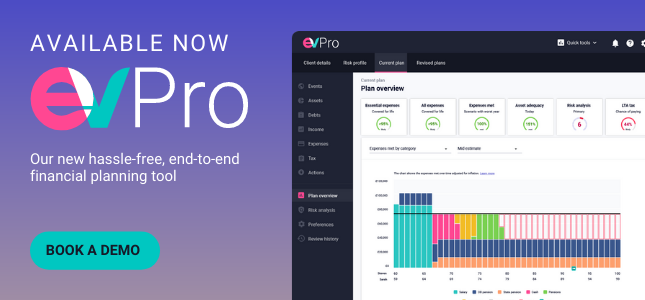Why matching funds to your clients' risk appetite is so important

Failing to match suitable investments with clients' risk appetite can have severe consequences - as many novice investors are beginning to find out. In this blog, we explore, how by enhancing your risk suitability process you can help your clients avoid the potential pitfalls with suitable fund recommendations.
These days, swathes of younger people engaging in high-risk investments such as foreign exchange, cryptocurrencies, and meme stocks such as Gamestop are shining a bright light on the dangers of investing in volatile assets risks are poorly understood.
Understandably, this behaviour is attracting considerable and widespread concern – these investments are highly speculative. And those taking on these risks, in many cases, do not have a wealth of assets to fall back on should they experience significant losses.
The concern here is such that the Financial Conduct Authority has decided to intervene. In late March, the watchdog published research aiming to grasp the reasons attracting younger people to risky investments.
What does the regulator think about client risk appetite?
Interestingly, the FCA identified a mismatch between the level of risk inherent within these products and investor suitability: nearly six in ten (59%) respondents said that significant investment loss would fundamentally impact their current or future lifestyle.1
Other findings within the report reveal deeper aspects at play. Rather than investing to reach a specific financial goal, young investors said emotions and specifically the “thrill of investing” attracted them to high-risk investments - drawing closer parallels to gambling than investing. Although we appreciate that fund and portfolio movements are part and parcel of longer-term investing, moving towards a financial objective should be a carefully plotted journey rather than a rollercoaster ride. Investors should be comfortable with the level of risk they are taking – both getting rich quick and losing everything should be off the table.
Although the issue mentioned above focuses on a specific demographic, it helps to highlight the pitfalls of failing to align investments and funds with an investor’s individual risk appetite. And this applies to advised clients, as well as DIY investors.
Seeking to continuously improve the advice process is key to our evolution
A large part of our recent focus has been exploring ways of transforming risk profiling. After conducting thorough research, we believe the methods applied when considering a fund or portfolio’s riskiness should be tailored to an investor’s specific objective. As things stand, a single method is used regardless of whether the client is seeking growth or income. This has serious flaws – many of the existing risk rating models are only really geared to account for accumulation. But whether an investor aims to, say, grow retirement wealth or draw an income, it can directly impact the riskiness of a particular fund. Two people investing the same amount of money into the same fund - one seeking growth, the other income - despite sharing identical asset allocations are exposed to different risks. It’s important, therefore, that we have a specific set of risk ratings for investors whose primary goal is income sustainability.
Our risk ratings have been split into two client objectives: growth and income to improve client outcomes. Our income risk ratings are designed to facilitate selecting suitable funds that match clients’ income risk appetite and has been designed to fit within an existing financial planning process involving a client’s income needs and retirement objectives.
Improving your risk-profiling capabilities with technology
This development forms part of a broader push to arm your improved risk-profiling processes. Combining risk rating, calculating the average income, and showing the potential for income to fall, helps advisers choose the most suitable investment solution for a specific client. And there are other benefits, too. It is a regulatory requirement for advisers to show how and why an investment solution has been recommended. A specified set of income risk ratings using an objective-based methodology complements cashflow planning, articulating how a specific fund matches client suitability requirements for income. Making it easier to compare relative funds, and importantly, measure how much a client’s long-term sustainable income from the fund may fall after five years. This is of particular importance. Some of their most significant risks to income sustainability occur in the first few years of investment. After five years, the possible reduction in income can then be matched to our income risk profiler’s risk profiles. This means that a risk rating can be created for a fund and then matched to a risk profile specific to an income objective.
It also stresses the importance of using a robust stochastic economic scenario generator rather than more straightforward and ultimately simplistic models when modelling for income. This is because considerations such as sequencing risk and pound-cost-ravaging must be captured and modelled to produce accurate outcomes.
We look at the impact of sequencing risk in our accompanying blog; Why choosing the right cash flow model for drawdown matters?
So what next?
If you found this information helpful and want to see how you can deliver better financial outcomes for your clients. Then, why not book your one-to-one demo of EVPro, ahead of launch by clicking the link below.
1FCA - https://www.fca.org.uk/news/press-releases/fca-warns-younger-investors-are-taking-big-financial-risks - 23 March 21
